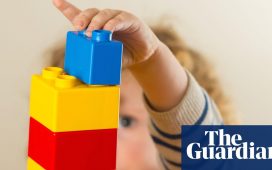U.S. high school seniors completed fewer federal financial aid applications for college this year, as compared with last year, which saw an even steeper drop — signals that the number of low-income students attending college is falling again.
The National College Attainment Network, a nonprofit organization that promotes college attendance and completion by low-income students, links the drop to the economic uncertainty caused by the pandemic.
“Students have had to go out into the work force to support their families,” said Bill DeBaun, the organization’s director of data and evaluation.
Many low-income students, who are disproportionately Black and Hispanic, are electing to take advantage of a pandemic labor shortage. More well-paying hourly jobs are available, in some cases with signing bonuses. “Higher wages do draw students from the margins,” Mr. DeBaun said.
Applications dropped by nearly 5 percent this year, or about 102,000 forms. Counting the drop last year, 270,000 high school students who might have attended college skipped filling out the financial aid forms, according to the organization’s analysis.
That is not good news for colleges that are struggling to fill their classes. Many low-income students normally attend community colleges and regional four-year schools, which have already borne the brunt of enrollment declines during the pandemic.
Michigan was one of the most affected states in terms of college enrollment losses last fall, with a decline of 9.2 percent, according to Ryan Fewins-Bliss, executive director of the Michigan College Access Network.
“These were enormous hits,” he said.
The federal form, the Free Application for Federal Student Aid, or FAFSA, requires students to supply financial information that is used not only to award federal grants and loans, but also to determine who gets financial assistance supplied by states and individual colleges.
And while it’s still possible for students who intend to enter college this fall to fill out an application and apply for federal Pell grants, the data collected by early summer are considered a barometer of college attendance for the fall.
The numbers, analyzed through July 2, also show that the poorest-of-the-poor students are lagging behind their counterparts in applying for aid, according to Mr. DeBaun.
“High schools with higher concentrations of students of color and students from low-income backgrounds saw greater declines in FAFSA completions,” he said.
For high schools with more than 40 percent Black and Hispanic enrollment, the decline in FAFSA completion rates was 8.1 percent, compared with a 2.2 percent drop for schools with lower Black and Hispanic enrollment, he said.
“Once students graduate from high school and they go out into the work force, they’re kind of in the wind,” Mr. DeBaun said. “For students of color, students of low-income backgrounds, the college-going pathway has never been easy. And the pandemic has created this maelstrom of different kinds of outcomes.”
Many of the low-income students who receive Pell grants attend the nation’s more than 1,000 two-year colleges, which provide a low-cost alternative for students who lack the means to pursue four-year degrees.
Those colleges, which frequently enroll older students, many with families, have experienced a big enrollment decline during the pandemic — about 10 percent — according to data from the National Student Clearinghouse.



